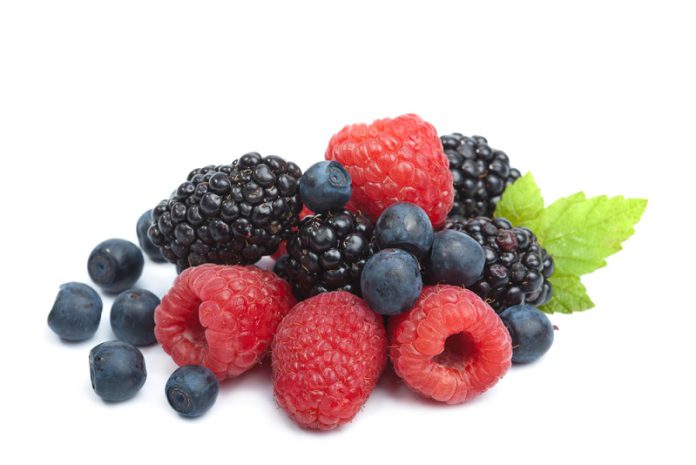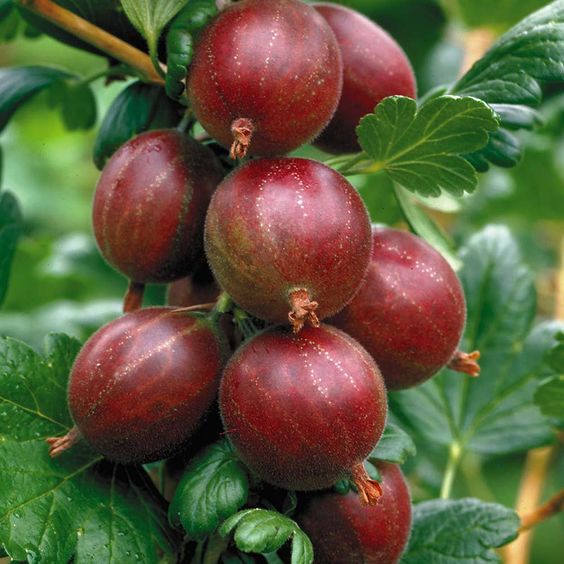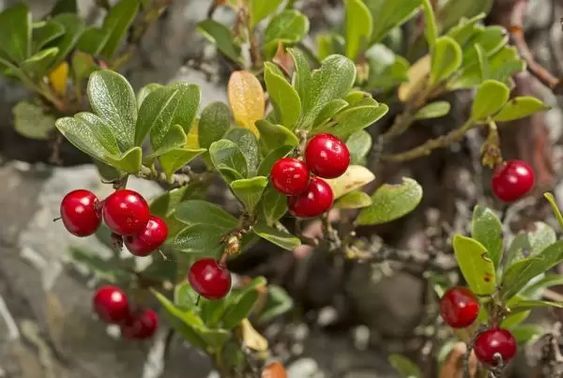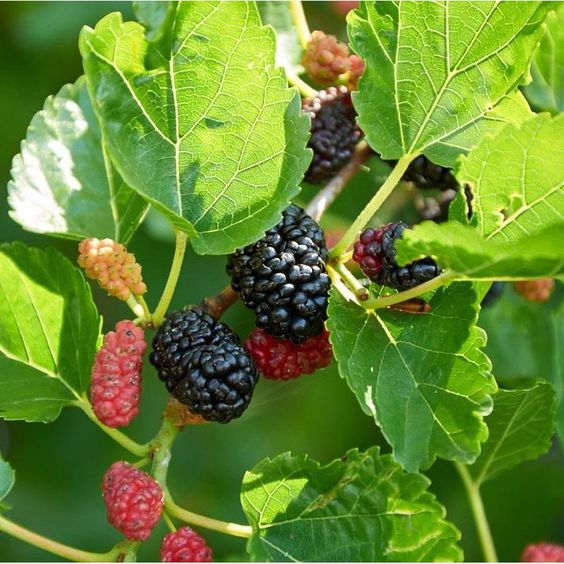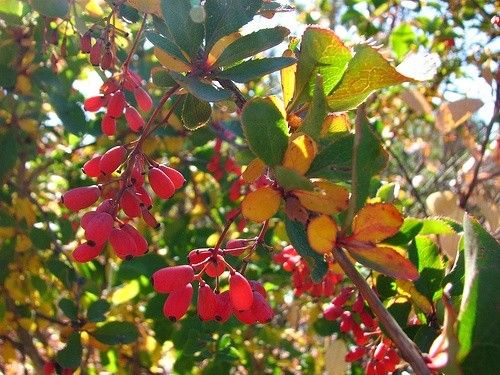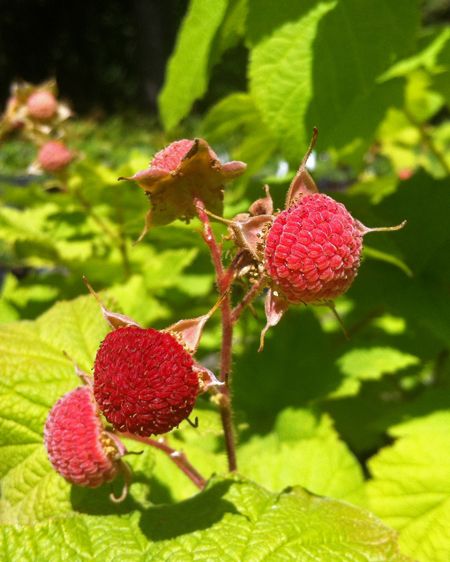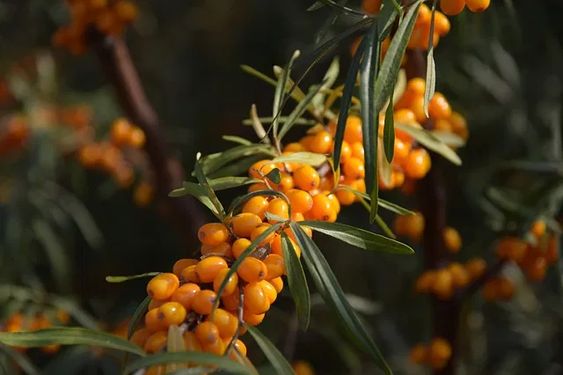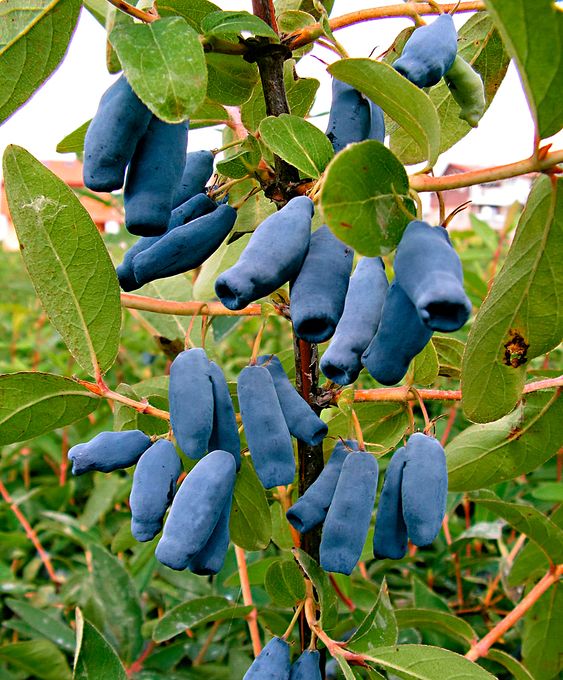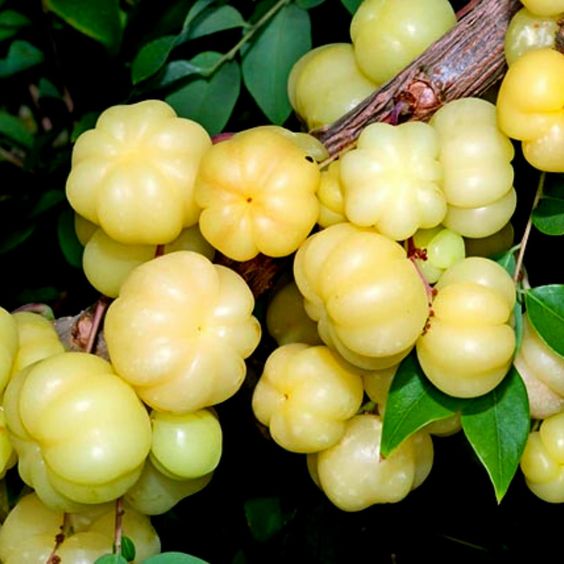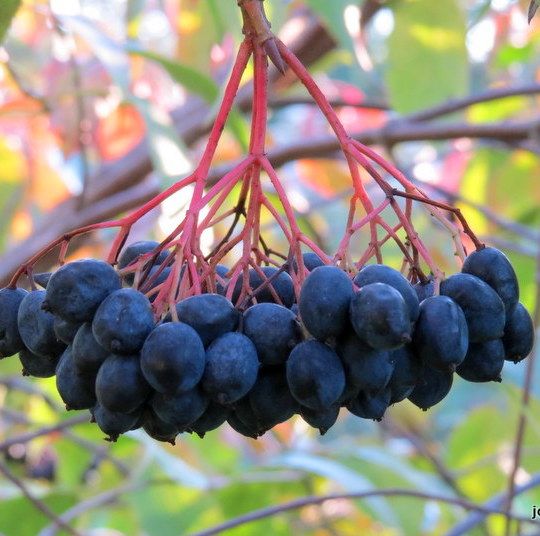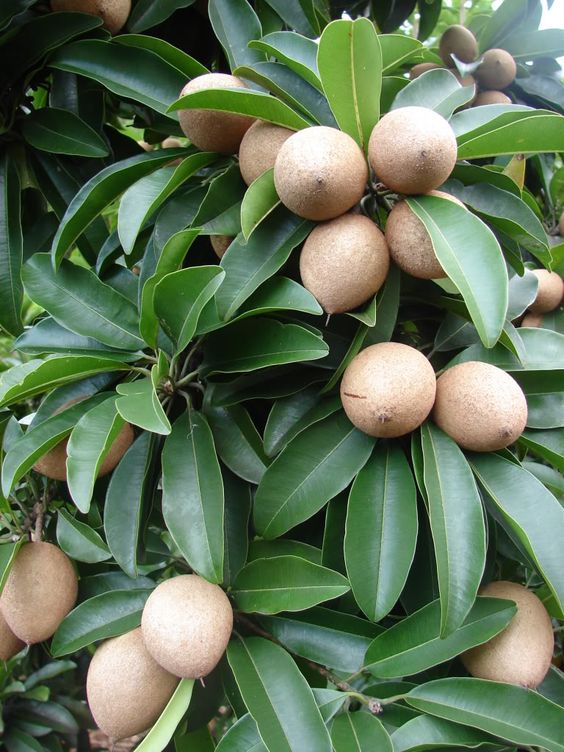olidhealth.com – Many kinds of different berries shapes and tastes are spread across the world. Common berries are used to serve as fresh, topping, smoothies, and can be preserved such as jam or syrups. However, be cautious of non-edible berries where only a few berries can be consumed since they contain toxic.
The most common fact about berries is the fruit with pulpy, small size, and edible fruit. In botanical terminology, Not every “berries” we know are actual berries. For example, plum and prune are not actual berries in botanical terminology and we usually call them all berries. Either it was a berry or not, we must be able to distinguish which berries are edible or not.
This article shows you 15 types of unique edible berries including health benefits and what kind of product it can be processed.
Hinnomaki Red Gooseberry
Hinnomaki Red Gooseberry or European Gooseberry is native to Europe and northern Africa. Most production came from Finland as Hino red. The tree is a dwarf shrub and its berry looks like a red spherical shape and has a similar appearance to a grape.
Hinnomaki Red Gooseberry has many health benefits to:
- Help digestion function.
- Have antioxidant and anti-inflammation agents (Anthocyanins and flavonoids).
- May have anti-cancer properties (phenolic compound).
- Medication for diabetes to control blood sugar levels.
- Prevent chronic disease.
Hinnomaki Red Gooseberry can be eaten raw and flesh, or it can be served as a topping, juices, or smoothies. It doesn’t have any side effects and can be consumed on a daily basis.
Amla Berry
Amla Berry or Indian Gooseberry is native to India. This unique berry has an appearance like a green spherical shape with a white stripe and has a sour taste. It has been used in ayurvedic medicine and has medical benefits.
- Reduce blood pressure (prevent blood coagulation).
- Antioxidant and anti-inflammation (vitamin C and polyphenol compound).
- Good for heart disease (help prevent the formation of blood cloth).
- Boosts immune system.
- Reduce cholesterol level.
- Reduce liver damage.
Amla berries can be eaten fresh, or they can be processed to make syrups, juices, or smoothies. It doesn’t have side effects if overconsumed but we suggested consuming in moderate quantity. If you can’t obtain amla berries fresh, it also came with a powder product.
Goji Berry
Goji Berry aka wolfberry was native to Asia, especially in Japan, China, and Korea is used in medicine and traditional cuisine. It has an appearance like mini chili and is preserved to extend its expired date.
It has potential health benefits because it has a zeaxanthin compound to help vision. another benefit of goji berries to:
- Prevent damaged cells caused by free radicals.
- Provide an immune system (have a large amount of vitamin C and vitamin A).
- Improve skin health and anti-aging effect (contain beta-carotene).
- Prevent liver damage.
Goji berry can be purchased in Asian or European markets in fresh or dried form. It can be added as a topping in desserts, smoothies, salads, or baked goods.
In addition, goji berry can interact with people who have blood pressure medication and diabetes medication. So if you have these conditions, you should talk to the doctor before eating these berries regularly.
Black Elderberry
Elderberry has many variants and types considering where it can live. Almost every region has it’s native elderberry. Black Elderberry (Sambucus canadensis) or American elder is the most common elderberry and has been produced in the farm industry. Few types of Elderberry are considered toxic if consumed raw because its seed contains a cyanide compound.
Actually, the cyanide can also be found in apple and crabapple seeds not only the elderberry itself. That is why we have to process it first before consuming it.
Black Elderberry has various medicinal properties like:
- High antioxidant agent (anthocyanins and flavonoid compound).
- Improve skin and eye health (high vitamin A).
- Reduce heart risk (lowering blood pressure and cholesterol).
- Have traditionally benefit to treat, fever, headache, lung disease, and muscle pain.
- Strengthen kidney health.
- May reduce chronic disease.
Black Elderberry must be processed at a high temperature to reduce toxicity. It can be served as jam, syrup, and jelly. We suggested consuming these berries with a moderate amount.
Bearberry
Bearberry is dwarf shrubs plant that native in the northern region because they can adapt to subarctic climate. Why its called “bearberry”?. In the subarctic region, bears attend to search for alternative food, and these berries are usually eaten by bears.
Bearberry contains flavonoids, tannins, and some essential oils which can be used as medical material for cough and sore throat. This unique berry also has antioxidant and anti-inflammation properties to:
- Treat arthritis.
- Boost immune system.
- Prevent urinary infection.
- Medication for bronchitis and lung disease.
Besides its healthy benefit, it’s not wise to overconsume bearberries. Some risks can occur if consuming excessively could trigger mild nausea, tinnitus, chills, and back pain.
Bearberry can be eaten raw and fresh. It also can be served as juice or smoothies in moderate quantity. If you live in a tropical climate who can’t find bearberry, it is also available as a supplement for medication purposes.
Blackberry
Blackberry is originated in Europe and it spread across Central Asia, northwestern Africa, north and south America. It has an appearance like a miniature grape with black color when it’s ripe. This small berry has huge health benefits because high in vitamins, minerals, and essential compounds. The benefits studies of blackberry are listed below section.
- Vitamins (A, C, and K) for maintaining eye, teeth, and bone health.
- Rich in fiber (for digestion support).
- Phenolic and flavonoid compounds (for antioxidant and anti-inflammation).
- May reduce neurodegenerative diseases.
- Maintain blood flow.
Blackberry is commonly found in jam, jelly, compote, or topping in dessert cuisine. It also can be eaten fresh and raw to gain more benefit.
Black Mulberry
Morus nigra or Black Mulberry have a similar trait to blackberry in rubus species because they have an identical appearance. We can tell the difference in the shape of its leave. It is native to Mesopotamia and Persia mountains. However, it also naturalized in Europe and middle east Asia.
Health benefit of black mulberry
- High content of vitamin K.
- Antioxidant and anti-inflammation agents (vitamin C, anthocyanins, and flavonoid).
- Improve heart disease (resveratrol compound to reduce stroke risk).
- Improve symptoms of menopause.
- May reduce risk of diabetes.
Black mulberry can be eaten raw and fresh or can be produced as favored in syrup, jam, compote, or jelly. The rare incident that occurs of allergic effect is different in every person. so may caution for eating mulberry if have an allergic reaction.
Persimmon
Persimmon is commonly not considered as a berry, therefore in botanical terminology, it is actually a berry. It has a similarity to tomatoes and is mostly produced in China. Persimmon has astringent and non-astringent varieties. it’s important to know which type of persimmon to eat because it’s different in nature.
Astringent persimmons like American variety persimmon can be eaten while it’s ripped or softened first to have a sweet flavor. It contains a high level of tannin. Non-astringent persimmons can be eaten fresh and raw. Astringent persimmons are sweeter than non-astringent persimmons
For medication purposes, it has many benefits because has high nutrients, fibers, vitamins, and minerals.
- Reduce risk of heart disease.
- Lowering cholesterol level.
- Reduce blood sugar level.
persimmon is usually processed to make dessert cuisine in east Asia. Another persimmon product is cake, salad, pudding, pies, and topping.
American Barberry
Berberis canadensis or American Barberry is a deciduous shrub witch native to northern and northeastern American mountains. This unique berry has a bright red color and is edible. Beware of another variant of barberry, because few of them are poisonous.
American Barberry has many benefits because containing Protoberberine alkaloids compound which to:
- Reduce blood sugar (remedy for diabetes).
- Reduce cholesterol (lowering heart risk).
- Reduce high blood pressure.
- Remedy for diarrhea and skin condition caused by a yeast infection.
- Antifungal and antibacterial properties.
American Barberry can be processed to make syrup, juice, jelly, and sometimes used to make beverages.
Thimbleberry
Rubus parviflorus or Thimbleberry (aka Redcaps in America) are native in northern American. It also can be found at highlands or mountains in subtropics or tropical regions. The berry shape has similarity to blackberry and can be distinguished by its maple-like leaves.
Thimbleberry has many health benefits because containing phenolic and flavonoid compounds to:
- Cure stomach ache.
- Antioxidant and anti-inflammation.
- Improve immune system.
- Heal wound and scar.
- Maybe used to treat anemia.
Besides the berry can be eaten fresh, the leave is poisonous unless boiled first to make tea. Any part of Thimbleberry can’t be consumed by pregnant women.
Thimbleberry can be processed to make jam, jelly, juice, smoothies, or it can also be dried for topping.
Sea Buckthorn
Sea Buckthorn or Seaberry is native in subtropic to subarctic climates. It grows in a mountain and can withstand low temperatures. The common sea buckthorn is found in Northern China, northern Europe, Canada, and Russia. In botanical termination, sea buckthorn is not an actual berry. We often mistake it as a berry because it indistinguishable appearance.
The benefit of sea buckthorn in medicine used to:
- Boost the immune system (rich in nutrients).
- Promote skin and heart health.
- Heal burns (contain anti-inflammation effect).
- Protect damaged cells caused by free radicals (contain quercetin and flavonoids).
- Prevent chronic disease.
Sea Buckthorn can be processed to make jam, compote, pies, juice, and oils. It has other applications in cosmetics and beverages. Sea Buckthorn oils are widely used in skincare and skin-related medication.
Blue Honeysuckle
Lonicera caerulea (Honeysuckle), also known as Blue-berried Honeysuckle or Honeyberry, are edible berries native in northern hemisphere countries like Japan, Canada, Poland, and Russia. This unique blue color berry with a rectangular shape is known as one of the ‘superfruits” because they have nutrition and health benefit.
- Contain polyphenol (anthocyanins) as antioxidant agents.
- A large amount of vitamin C (as same as lemon) to boost the immune system.
- High fiber to help digestion function.
- Minerals like potassium and magnesium for bone and muscle.
- Stimulate brain function and anti-aging.
- Lower blood pressure.
- Preventing chronic disease and cancer medication.
Honeysuckle has the potential to cultivate in bigger industries, so it will be distributed across the county. Honeysuckle in its fresh state is good for consumption. However, it can be processed with a simple procedure to make variant products like juice, pie, compote, jam, smoothies, or stew.
Star Gooseberry
Phyllanthus acidus or Star Gooseberry is native to a tropical and subtropical climate. It has spread out in Asia and Caribbean through to central and south America. Other common names in Asia like Cerme or Cermai in Micronesia and Guam, Chalmeri in India, Mayom in Thailand, and many other names in different countries. The tree was in small to medium size and part of the leaves and fruits are edible. the fruit has green in color and appears in clusters.
Star Gooseberry has many benefit for health. the main antioxidant compound in star gooseberry is Vitamin C (ascorbic acid) and phenolic compound. Besides it having high antioxidants, many benefits are also included in this berry
- Anti-inflammation properties (treatment for sore throat, cough, etc).
- Antimicrobial.
- High in fiber (to help digestion system).
- Promote bone and muscle (minerals like calcium and iron).
- Hepatoprotective effect (treatment for asthma and other lung diseases).
In Asia, Star Gooseberry is commonly used as a traditional remedy in various conditions. The poultice of leaves is used to treat rheumatic and urticaria conditions. The root infusion can also be used to treat asthma. We must be careful not to consume the root because consider toxic.
Star Gooseberry can be eaten raw and flesh, but commonly processed as syrup, chutney, relish, pickled, and preserved. The berry doesn’t have a side effect if consumed on daily basis. Excessive intake may cause sourness and hyperacidity in the mouth.
Nannyberry
Viburnum lentago or other common name is Nannyberry is native to northeastern and Midwestern America. It has an appearance like red or black ellipse-shaped with sweet-sour flavor.
Nannyberry has many benefits for medical purposes because:
- Have antioxidant and anti-inflammation (anthocyanins and flavonoid).
- High fiber to help digestion system.
- Contain vitamins and minerals to promote the immunity system.
- Anti-cancer.
Besides its berries, nannyberry leaves can be processed to make tea. It has an effective diuretic to promote kidney function and heal burning urination.
This berry can be eaten raw and fresh, or it can be processed to make jam, jelly, or tea.
Sapodilla
manilkara zapota, or Sapodilla is an edible berry that was native in Central America, and southern Mexico then spread in several regions of Asia including India and Southeast Asia. Although the fruit was too big to be considered a ‘berry’, it’s technically a berry from Sapotaceae family.
In traditional Ayurveda medicine, it has many benefits like:
- High calorie and fiber for improving digestion system.
- Hich of vitamin C and A for antioxidant and anti-inflammation agents.
- Many minerals like potassium and iron for promote bones and prevent anemia.
- Good for pregnant women because has folate acid.
Besides the fruit can be eaten, it also can be scrubbed to your body. Because it has an antibacterial agent.
Sapodilla can be eaten fresh or can be processed to juice, smoothies, jam, or compote. It doesn’t have a negative effect. However, excess intake of sapodilla can cause gastrointestinal problems. So we suggest eating these berries in a moderate amount.
References
https://www.nature.com/articles/1602512 – Edible berries: Bioactive components and their effect
https://pubmed.ncbi.nlm.nih.gov/24012283/ – Wild berries: a good source of omega-3
https://www.ejfood.org/index.php/ejfood/article/view/44 – Sugar content on edible berries


